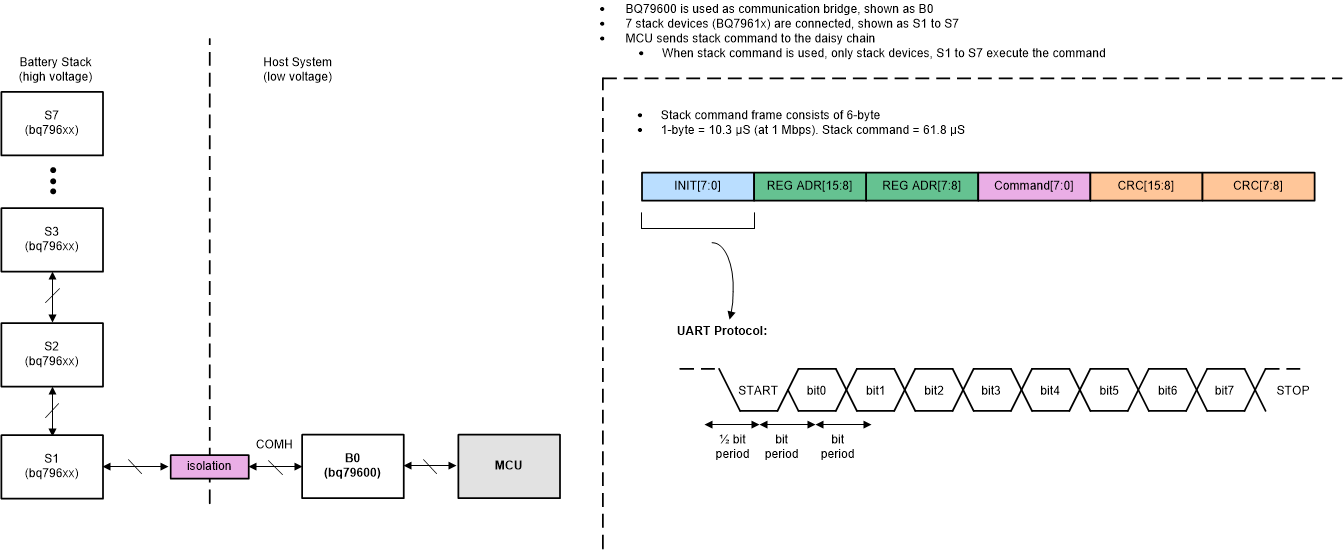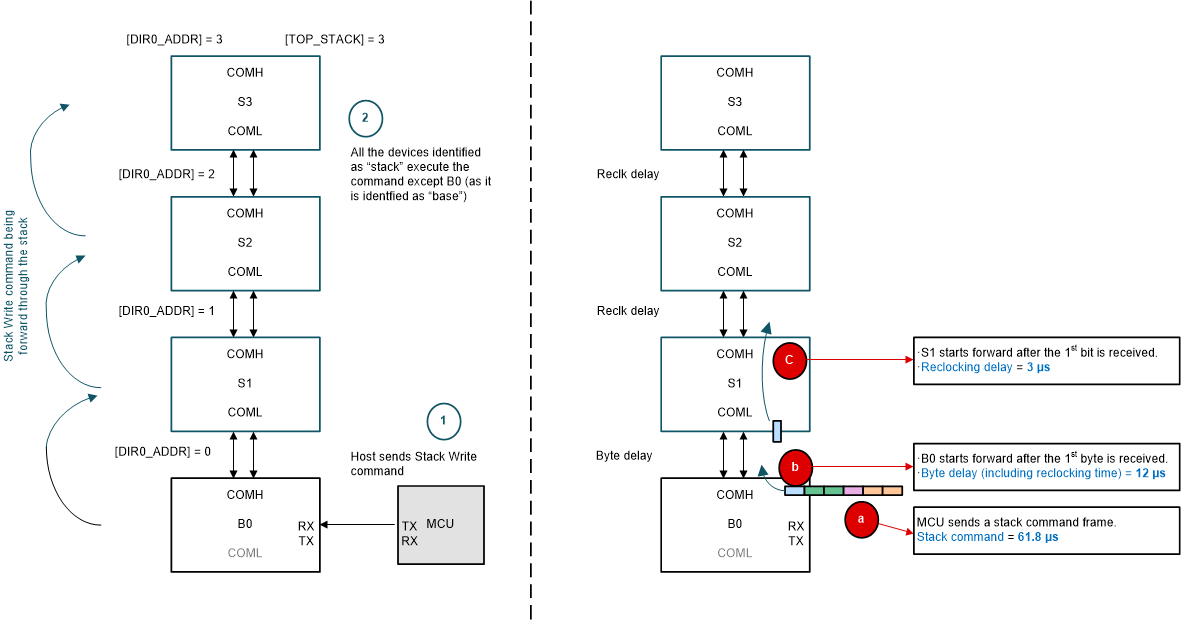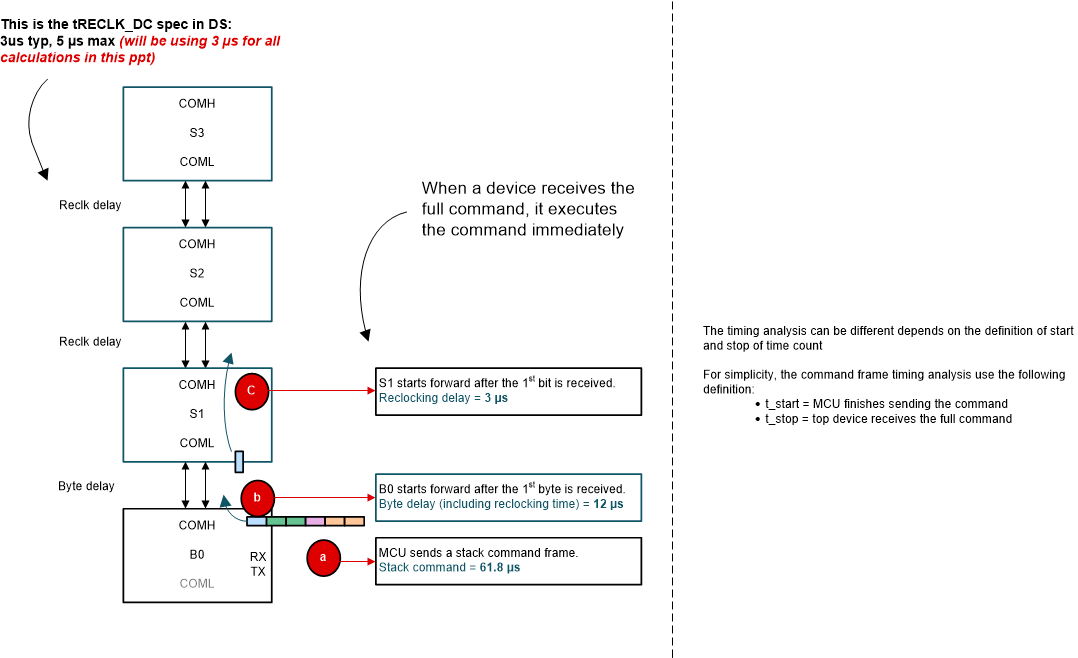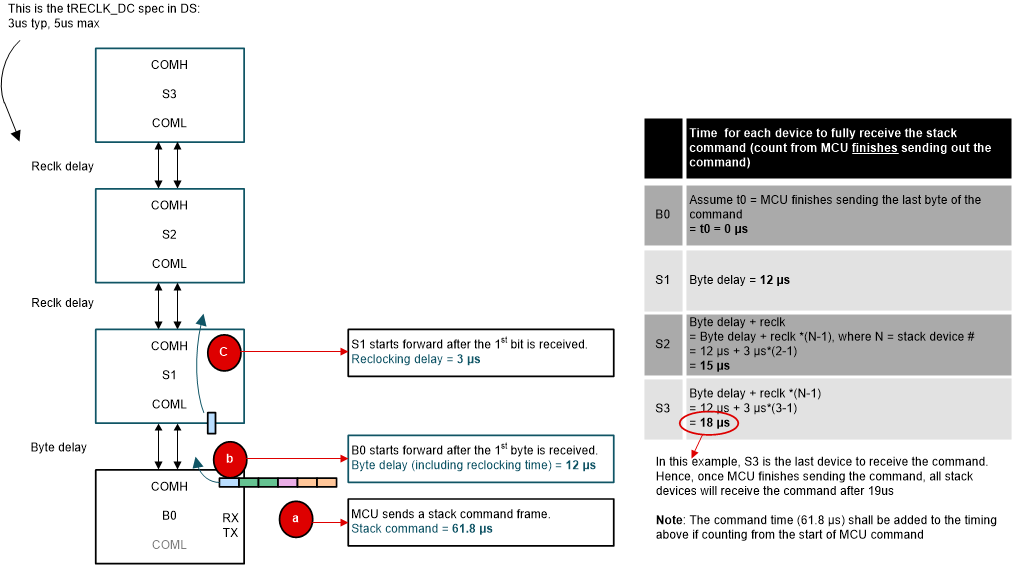SLVAEP4 October 2023 BQ79600-Q1 , BQ79612-Q1 , BQ79614-Q1 , BQ79616 , BQ79616-Q1 , BQ79652-Q1 , BQ79654-Q1 , BQ79656-Q1
6 Mixed Isolation Circuits using bq79600-Q1
When using the bq79600-Q1 device as the communication bridge in combination with any variant of the bq79616-Q1 device as the stack device, it is important to validate the robustness of the isolation interface between the base and first stack device. This process is because the devices are designed to support a mixed isolation type on the COMH side of the base vs. the COML of the stack device. Typically this means that the bq79600-Q1 will have a transformer from the previous list, and then the user may select any of the three supported isolation types for the bq79616-Q1 stack device side (that is the same transformer part number on both sides if transformer isolation is desired). Every scenario with different transformer, cap, and choke part numbers mixed has not been tested so it is important for the user to ensure that the signal integrity is maintained after choosing their isolation components. Schematically, the key difference is that the decoupling capacitors on the bq79600-Q1 circuit are 100pF compared to 220pF for the bq79616-Q1 device.
 Figure 6-1 Example: BQ79600-Q1 Connected
to BQ79616-Q1 Timing
Figure 6-1 Example: BQ79600-Q1 Connected
to BQ79616-Q1 Timing Figure 6-2 How a Stack Command is
Sent
Figure 6-2 How a Stack Command is
Sent Figure 6-3 When Does Each Device Receive
the Command?
Figure 6-3 When Does Each Device Receive
the Command? Figure 6-4 Sequence of Device Receiving
or Sending Commands
Figure 6-4 Sequence of Device Receiving
or Sending Commands